Amazon Ratings vs. Amazon Reviews: What’s the Difference?

Amazon has steadily grown its market share over the past decade. And the COVID-19 pandemic supercharged that growth. According to Forbes, Amazon’s annual revenue was up 38% in 2020.
Of course, there are a number of reasons why a large (and growing) number of shoppers opt to shop on Amazon, including product selection and free, fast shipping. But another top reason shoppers choose Amazon is the availability of ratings and reviews. In fact, 40.5% of U.S. shoppers indicate that the presence of ratings and reviews is a key reason they shop on Amazon.
Ratings and reviews help shoppers make confident, informed purchase decisions. According to our friends at Bazaarvoice, “ratings and reviews are the number one online feature shoppers rely on when making informed product decisions faster.” As such, customer-centric brands make ratings and reviews a key part of their marketing strategy on Amazon.
But ratings and reviews are two words that are often used interchangeably. While they’re certainly related, they’re not the same thing. In this blog, we’ll explore the key differences between ratings and reviews — and the role each plays in driving purchase behavior on Amazon.
What are Amazon Ratings?
Essentially, a rating is a star value (between one and five stars) that a shopper submits for a product (or its features). In 2019, Amazon introduced one-tap ratings, which made it possible for consumers to submit a star rating without writing a full review.
One-tap ratings encourage shoppers to share feedback, even when they don’t have the time to write a full review. What’s more, it’s been one of many ways Amazon has worked to combat fake reviews.
How Ratings are Submitted on Amazon
A shopper can start the rating submission process from the homepage, app home screen, orders page or product page. For example, this shopper can click on the appropriate star rating for a recently purchased flower pot right from the homepage.

Once the shopper selects the appropriate star rating, they’re taken to a write a review form. A green checkmark appears, letting them know their rating has been submitted. They can also provide ratings for specific features of the flower pot, write a written review or upload photos or videos of the product. But none of this is required.
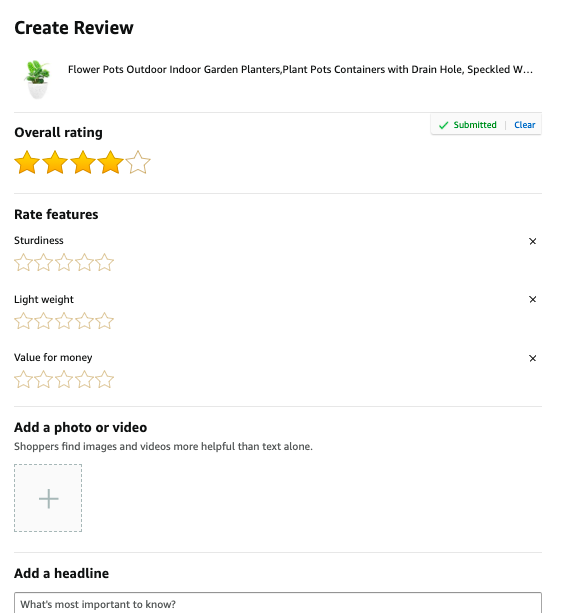
One-tap reviews are only submitted if a shopper actually purchased the specific product on Amazon. If a consumer chooses a rating for a lunchbox they didn’t purchase on Amazon, the green check box doesn’t appear.
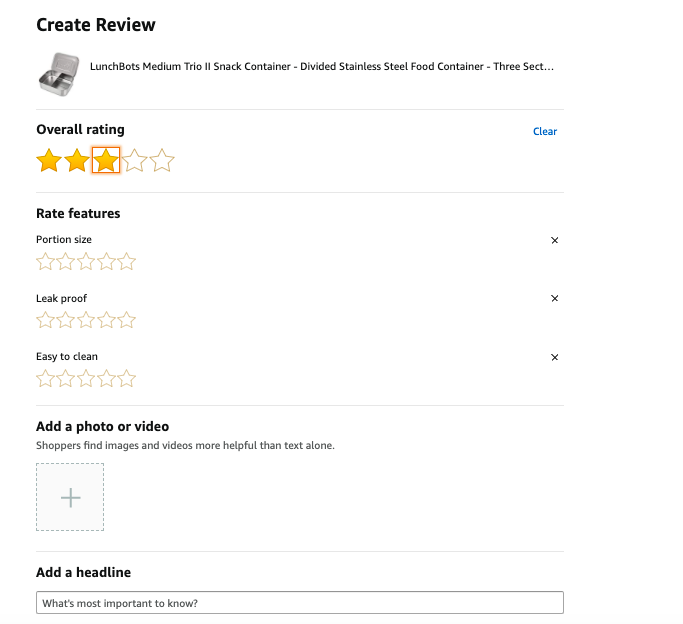
Where Ratings are Displayed on Amazon
The overall star rating for a given product appears right at the top of the product page. Amazon doesn’t use a simple average to calculate the average star rating; instead, they consider a number of factors in this calculation, including recency and trustworthiness.
For example, a shopper can see right away that this air freshener has an overall star rating of 5.0 with nearly 14,000 individual ratings. If the shopper hovers over the overall star rating, they’ll see a breakdown of ratings by star.
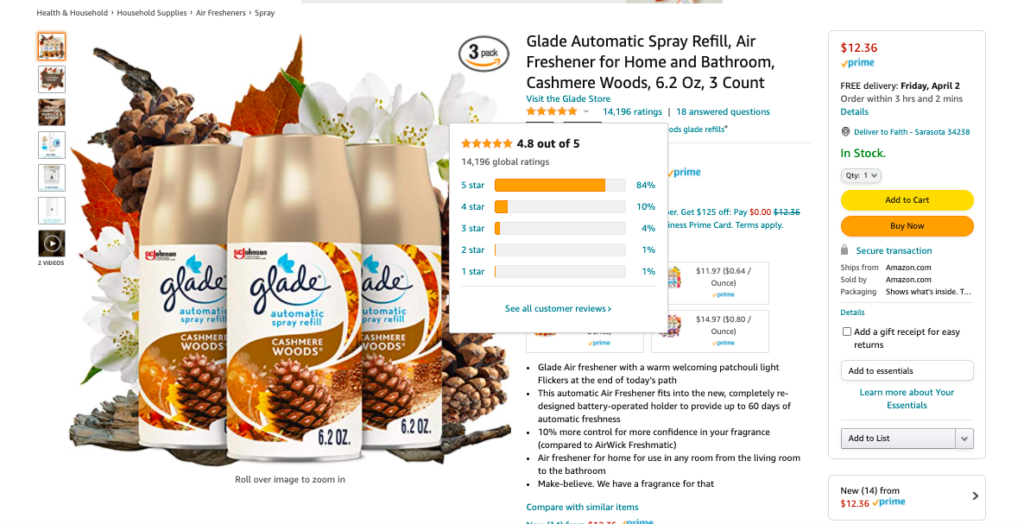
And if they click through, they’ll be taken to a more detailed display that also includes a breakdown of feature ratings.
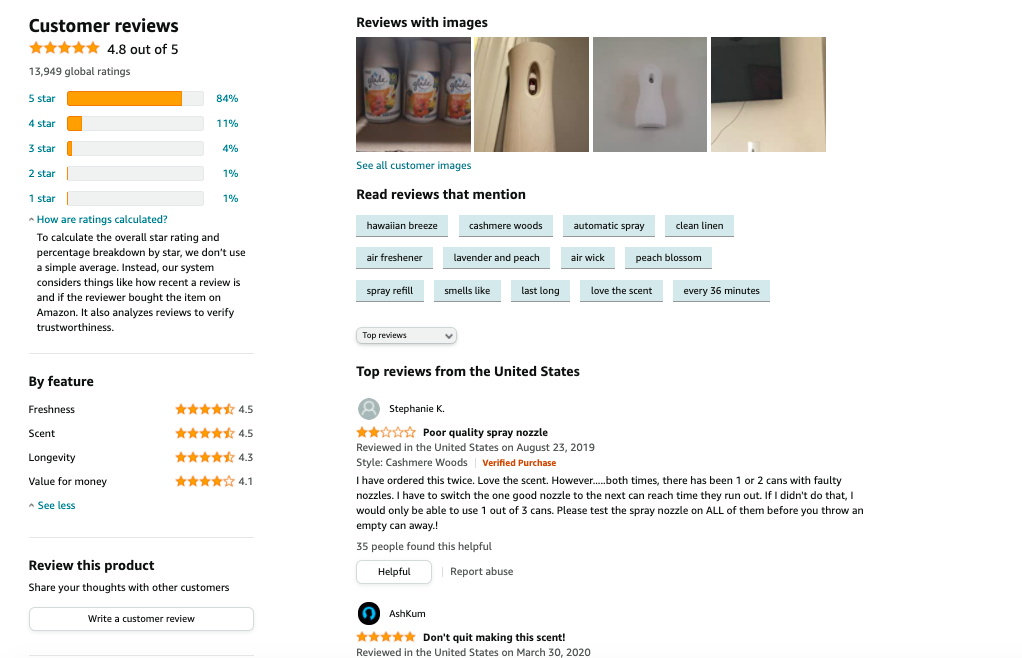
Many brands also feature the overall star rating for a product in their Amazon Advertising campaigns. Doing so piques shoppers’ interest — and boosts click-through rates. For example, here’s a display ad for Febreze air freshener spray that includes the overall rating for the product — as well as the rating count.

Why Ratings Matter for Brands that Sell on Amazon
Star ratings have a big impact on purchase behavior. If a shopper sees that a product has a high overall star rating, they’re more likely to learn more about the product — and eventually convert. According to our friends at Yotpo, a staggering 96% of purchases are made for products with an average star rating of at least four stars.
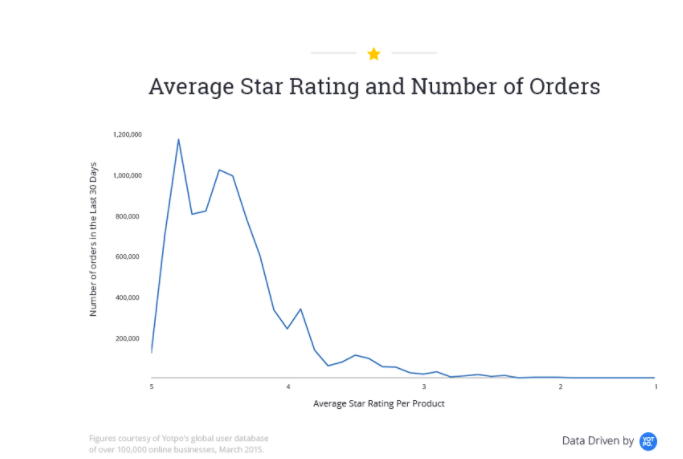
The good news is, it’s relatively easy for brands to generate a high volume of ratings because it requires little effort on the part of the shopper. And clearly, a high volume of great ratings can have a big impact on sales.
What are Amazon Reviews?
Reviews are written feedback shoppers can share about products they purchase on Amazon. This is typically commentary about how a product did (or didn’t) meet the shopper’s unique needs and can include:
- A headline
- Written commentary
- Photos or videos of the product in action
How Customers Submit Reviews on Amazon
The review submission process starts out exactly the same as the process for submitting a rating. A shopper navigates to the review form from the homepage, app home screen, orders page or product page. After choosing a star rating for a product, the shopper can then add their written review.
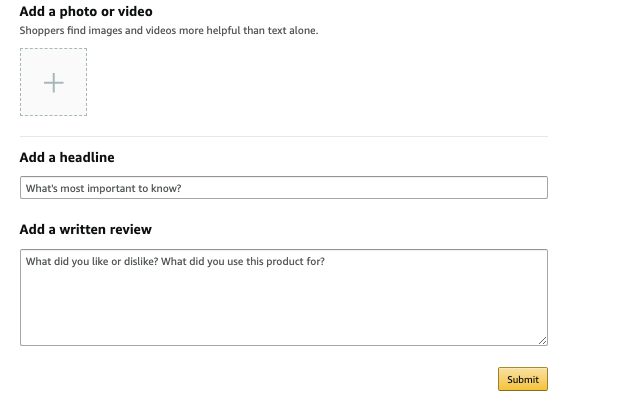
Where Reviews are Displayed on Amazon
The “top reviews” for an item are displayed right on the product page. Shoppers can also choose to display the most recent reviews.
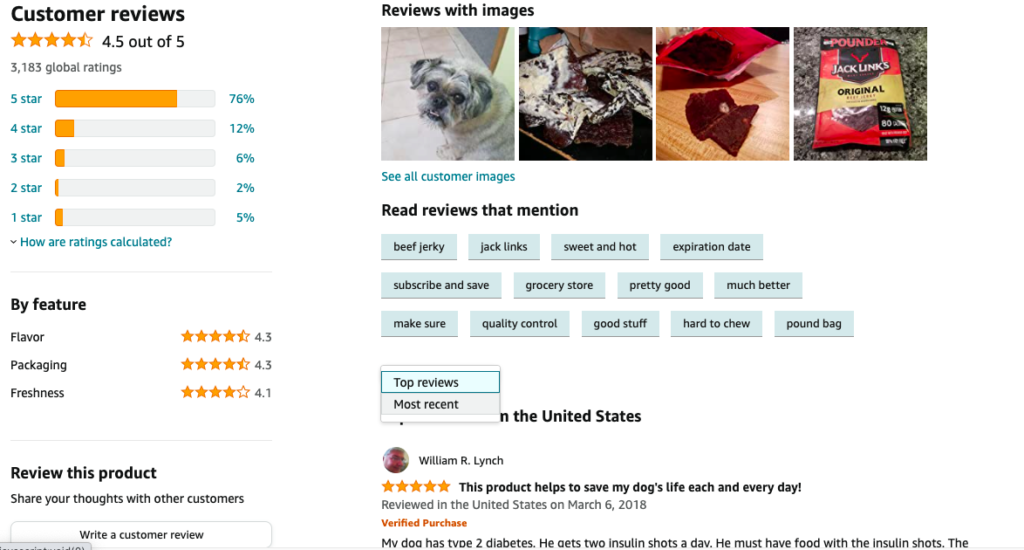
If a shopper clicks “see all reviews” they’re taken to a page where they can more easily sort, filter and search through reviews to find the content most relevant to them.
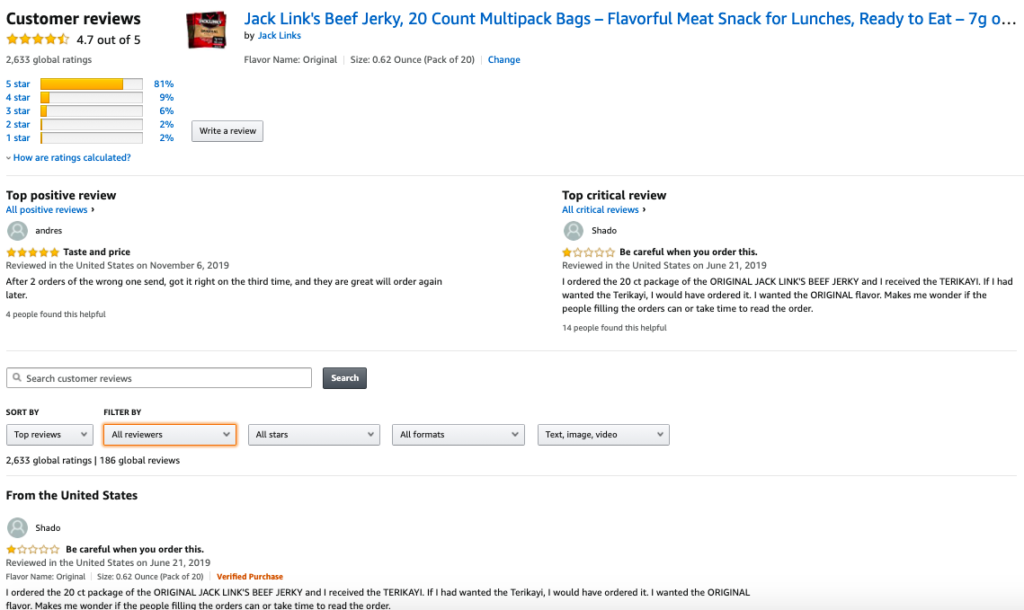
Some brands also feature positive reviews in the image carousels on product pages to pique shoppers’ interest. Here’s an example from a product page for Larabar gluten-free bars.
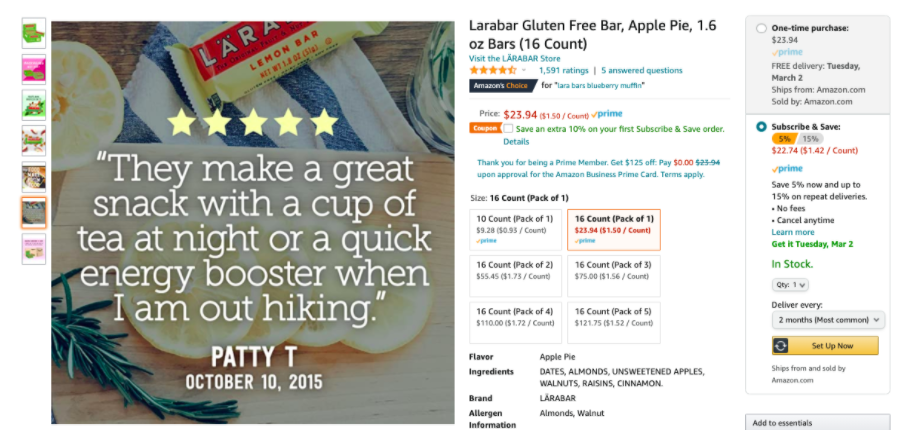
Why Reviews Matter for Brands that Sell on Amazon
Today, shoppers depend on reviews to make smart purchase decisions. Amazon shoppers are no exception. According to a Feedvisor report, 41% of consumers always read reviews before making a purchase on Amazon. And 36% do so frequently. Only 6% say they rarely or never read reviews before making a purchase on Amazon.
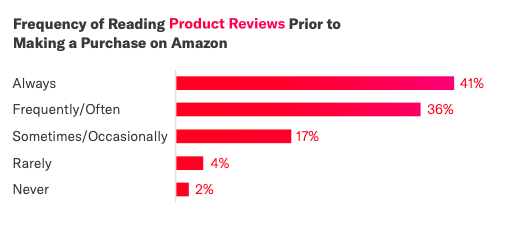
When shoppers read reviews, it impacts their purchase behavior. According to our friends at Trustpilot, 82% of consumers indicate that the presence of positive ratings and reviews make them more likely to make a purchase. And the same Feedvisor report we mentioned earlier found that 57% of consumers consider positive product reviews to be a “very important” factor that influences product selection when shopping on Amazon.
Generating a steady stream of reviews also helps boost the visibility of your product pages. That’s because Amazon prioritizes products with more reviews by displaying them higher in search results.
Finally, Amazon reviews are a rich source of actionable insights your brand can use to improve products and experiences. When a shopper submits a rating, you get a vague idea of whether the customer liked the product. But there’s no clear action to take if ratings are consistently low. With reviews, however, your brand can continuously measure sentiment, look for trends and identify impactful ways to improve products and the customer experience. Using a reputation management solution like Reputation Studio from 1440 makes it easy to measure the sentiment of reviews — and identify ways to improve products and experiences.
Leverage Ratings and Reviews to Drive Success on Amazon
Amazon is a key sales channel for many brands. By generating plenty of ratings and reviews on an ongoing basis, you’ll increase visibility, drive sales and uncover opportunities to improve your products and customer experiences.